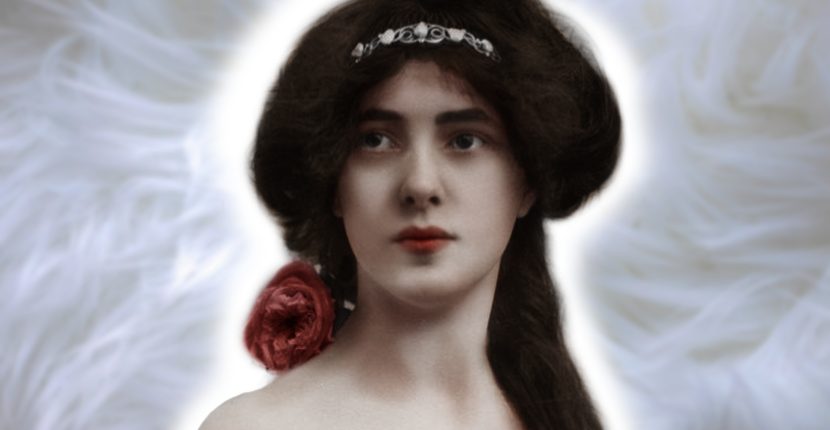Each decade throughout history has had its fashion icons and supermodels who, from today’s perspective, represent the fashion world and beauty standards of their era. These famous ladies were lethally beautiful and seductive — a combination that provided them with many privileges and kept them at the center of attention.
“Gibson Girl” Evelyn Nesbit was the It-girl of the early 20th century.
A ginger-haired beauty from Pittsburgh, PA, and the most wanted model in America at the time, Nesbit led a lavish lifestyle. She was regularly in the spotlight, especially when it came to relationship melodramas, one of them culminating with the so-called “trial of the century.”

The comfortable, sheltered life of her youth came to an abrupt end when her father died in 1895, leaving his widow to sell their home in order to pay off his debts. Mrs. Nesbit decided that Philadelphia might offer better prospects for herself and her children, Florence Evelyn and Howard. She secured a position at Wanamakers and was able to find a jobs there for both the children too, possibly lying about their ages even though there were no child labor laws back then.
Working on the counter, Evelyn Nesbit caught the eye of a local artist. This chance encounter marked the beginning of her glittering career; she was soon regularly posing as the favorite model for a group of respectable local painters and illustrators, each of whom was vetted by her mother. Mrs. Nesbit was raised with staunch Victorian values. She believed a woman’s body should mostly remain covered and insisted that Evelyn was not to “pose in the altogether.”

When the family relocated to New York in 1900, Mrs. Nesbit carried with her a handful of letters of introduction for Evelyn from the Philadelphia artists, with which she approached James Carroll Beckwith. In no time at all, she became among the most sought-after artists’ models in the city. The face of Evelyn Nesbit graced advertisements, magazine covers, and souvenir items.
She was New York’s first pin-up girl, featuring on corporate calendars and vignette photo postcards.
Evelyn soon tired of modeling and turned to the stage. It was while dancing as a chorus girl that she caught the eye of the 47-year-old wealthy socialite, Stanford White. Evelyn was either 14 or 16-years-old at the time.

White was a widely-known, talented American architect who designed the arch in Washington Square Park and the second iteration of Madison Square Garden. White was not only a famous architect but also notorious for his promiscuity, fondness for young girls, and bedroom experimentation.
Girls were enchanted by him, as well as by his fortune and social status, of which they received many flattering privileges in White’s Sewer Club. When he saw Nesbit performing, he was enthralled by her charm and beauty and invited her to lunch in his apartment, accompanied by fellow chorus girl Edna Goodrich.
The lavish lunch date ended on an upper floor of White’s private, luxurious multi-storied apartment. The room contained an innocent-looking swing covered in red velvet on which the girls played, unaware at the time of the sexual connotations to the scene.
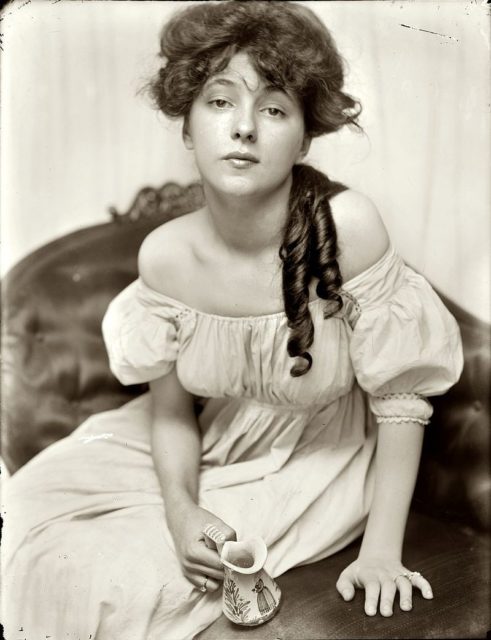
It didn’t take long before the cunning White won Evelyn’s mother’s affection and carried on courting the girl in his apartment. However, his kindness and fondness were not fruits of generosity but had a price that unfortunately was paid by the young Evelyn.
White encouraged Mrs. Nesbit to take a weekend break out of town, assuring her that he would watch over Evelyn. He invited the girl to spend a few days in his apartment — a casual get-together which ended up with drunken Evelyn losing her virginity. It was a shock and a traumatic experience for her while White considered it a regular part of their romance.
Nevertheless, the relationship continued for a full year, with Nesbit drawn to the new lavish lifestyle and expensive gifts which White provided for her.
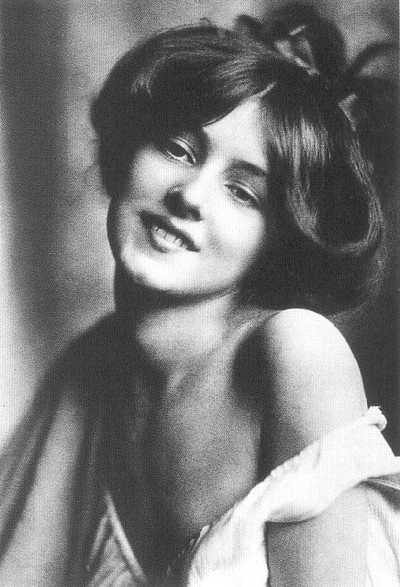
Her next romantic encounter was with John Barrymore, a relationship that her mother and White, who remained an influential figure in her life, refused to condone as he was not wealthy enough. She had short flings with a few other young suitors before she met her future husband.
Harry Thaw was a multi-millionaire socialite with notorious connections. He was known for his extravagance, reckless behavior, and drug use. He was also mentally unstable. Thaw was head over heels for Evelyn and couldn’t keep himself from buying her gifts or sending her love letters.
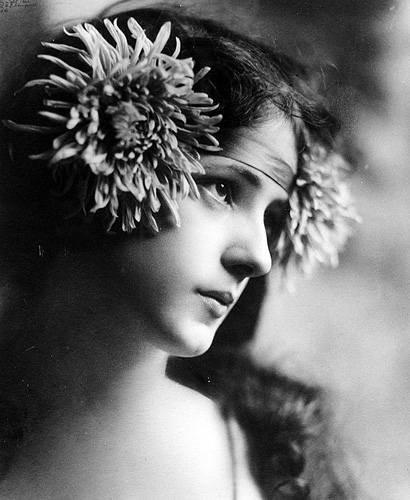
The eccentric millionaire managed to gain the trust of Evelyn’s mother, promising to take good care of her daughter. He took the Nesbits on a confusing trip across Europe. When Mrs. Nesbit could no longer stand the pace, Thaw and Evelyn continued the trip without her. They traveled first to Paris, where Thaw forced Evelyn’s confession of her first night with Stanford White, then to a secluded castle in Austria where Thaw became manic, locking her up and beating her. When they got back, Thaw and Evelyn got married and started living on his estate.
Related Video:
But where was White in all this? Reportedly, Thaw and White were rivals of long-standing and some historians even claim that Thaw’s main reason for courting Evelyn was to take her from White. Thaw promised to protect Evelyn from White if he ever came close to her again.
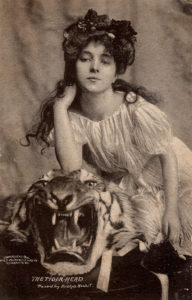
Fate soon confronted these two “antagonists” at the theater of Madison Square Garden. When the show was about to begin, Thaw stood up and shot White — two bullets in the back of his head and one in his shoulder. The panicking screams and shouts by the audience were accompanied by Thaw’s exclamations: “He had it coming to him! He took advantage of the girl and then deserted her!”

Thaw’s very expensive law team used his supposedly “fragile mental health” as his defense. Evelyn was called to the witness stand where she was forced to expose every detail of her relationship with White, which she had kept secret from everyone except Thaw. The first trial ended with a hung jury. This scandal made Evelyn widely popular as the media eagerly reported the case of a violent love triangle between a minor girl and two unadmirable older men.
At the second trial, the judge ruled Thaw not guilty on grounds of insanity and had him incarcerated at the Matteawan State Hospital for the Criminally Insane. He walked free seven years later after his legal team found a way for him to be declared sane.
In 1915, the couple divorced and Thaw died in 1947, leaving Evelyn with $10,000. In the years to come, she retreated from public life and became a painter. She passed away in 1967 at the age of 82.
